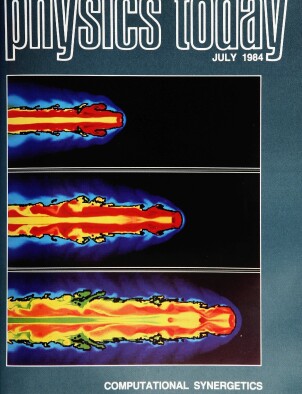The Harvard summer school in astronomy
DOI: 10.1063/1.2916320
Professional astronomy in the 1920s and 1930s was a science in transition. Modern relativistic cosmologies were born, and three major areas of modern physics became central to progress in astronomy: quantum mechanics, nuclear physics and relativity. The old empirical and quantitative methods of spectroscopic astronomy, methods that generated vast amounts of systematic knowledge of the spectra of the Sun and stars and the dynamics of stellar systems, were being supplemented by rational and quantitative methods. These new techniques promised to reveal not only the compositions of the Sun and stars, their sources of energy and their ages, but also the origin and ultimate fate of the universe.
This article is only available in PDF format
References
1. Recent studies by historians of this transition period include: R. W. Smith, “The Origins of the Velocity–Distance Relation,” Journal for the History of Astronomy (JHA) 10, 133 (1979);
R. F. Hirsh, “The Riddle of the Gaseous Nebulae,” Isis 70, 197 (1979); https://doi.org/ISISA4
J. M. Crelinsten, The Reception of Einstein’s General Theory of Relativity by American Astronomers, 1910–1930, unpublished PhD dissertation, University of Montreal (1981);
K. Hufbauer, “Astronomers Take up the Stellar Energy Problem,” Historical Studies in the Physical Sciences 11, 277 (1981);
D. H. DeVorkin, R. Kenat, “Quantum Physics and the Stars (I): The Establishment of a Stellar Temperature Scale,” JHA 14, 102 (1983),
D. H. DeVorkin, R. Kenat, “Quantum Physics and the Stars (II): Henry Norris Russell and the Abundances of the Elements in the Atmospheres of the Sun and Stars,” JHA 14, 180 (1983).
Astronomers and historians have written numerous review papers on this period. See David H. DeVorkin, The History of Modern Astronomy and Astrophysics: A Selected, Annotated Bibliography, Garland Press, New York (1982).2. R. Berendzen, M. T. Moslen, in R. Berendzen, ed., Education in and History of Modern Astronomy, Ann. New York Acad. Sci. 198, 46 (1972).
3. Bart Bok Oral History Interview, AIP Center for History of Physics, page 328.
4. C. Weiner in D. Fleming, B. Bailyn, eds., The Intellectual Migration, Harvard U.P., Cambridge (1969), page 190.
5. Reference 3, page 332.
6. Letter from Harlow Shapley to Antonie Pannekoek, 8 November 1934, Harlow Shapley Director’s Correspondence, Harvard University Archives (HSDC‐HUA).
7. Letter from Harlow Shapley to N. Henry Black, 22 September 1932, HSDC‐HUA.
8. Letter from Harlow Shapley to Kirtley Mather, 24 September 1934, HSDC‐HUA.
9. Letter from Harlow Shapley to Peter Millman, 24 October 1934;
letter from Millman to Shapley, 4 November 1934, HSDC‐HUA.10. Letter from Harlow Shapley to Kirtley Mather 7 October 1935, HSDC‐HUA.
11. Letter from Antonie Pannekoek to Harlow Shapley, 22 October 1935, HSDC‐HUA.
12. Letter from Frank Schlesinger to Harlow Shapley, 10 December 1935, HSDC‐HUA.
13. Letter from Harlow Shapley to Frank Schlesinger, 26 December 1935, HSDC‐HUA.
14. Letter from Megnad Saha to Harlow Shapley, 5 November 1936, HSDC‐HUA.
More about the Authors
David H. DeVorkin. Smithsonian, Institution's National Air and Space Museum, Washington, D.C..
